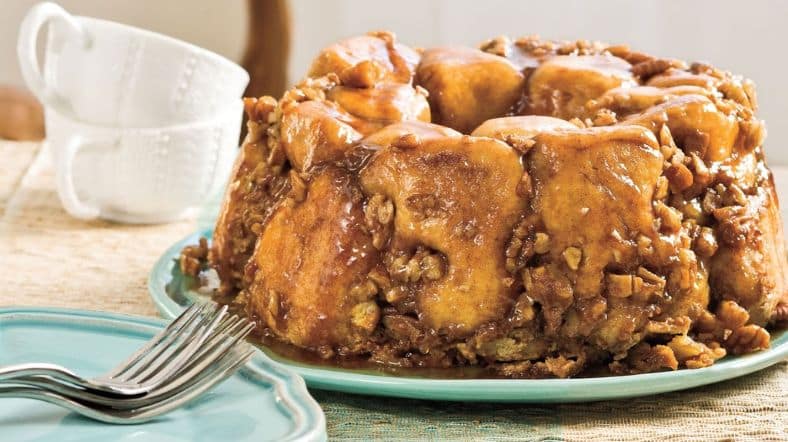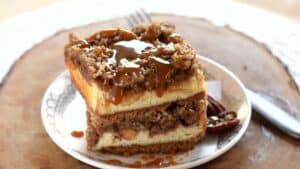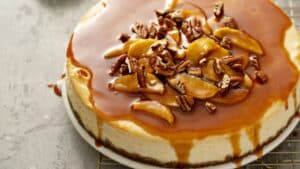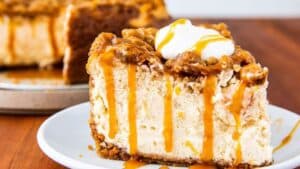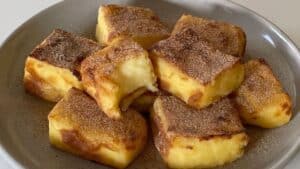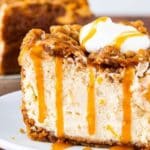Caramel. It sticks to your soul the way it sticks to your teeth. And when it coats warm, buttery dough pulled apart by eager fingers, something ancient inside us wakes up. That’s what Sticky Sweet Gooey Caramel Pull-Apart is. It’s not dessert. It’s theatre.
This article isn’t some blog-fluff filler for Pinterest clicks. This is for you professional chefs, pastry savants, bakery operators—anyone who takes laminated dough seriously and knows a mise en place isn’t a suggestion. We’re going all in. Techniques, science, pitfalls, and tricks nobody writes down. You’ll walk away with a deeper grasp of what this dessert demands and how to make it unforgettable.
Let’s rip it open.
What Even Is a Caramel Pull-Apart?
You could call it monkey bread, but that’s like calling a croissant a roll. Caramel pull-apart is an architectural dessert. A stack of yeasted dough balls, drenched in caramel, baked until the sugar hits the edge of chaos. It pulls apart because it was built that way. Not sliced. Not plated. Shared. Torn. Drenched in communal sweetness.
It’s what happens when brioche meets a candy shop.
The Dough: It Starts Here or It Ends Here
Forget shortcuts. If your dough’s not right, your pull-apart’s gonna chew like old sponge. The base should be enriched. Egg-heavy. Butter-mellowed. Think brioche. Or challah, if you want it a touch leaner. But skip milk bread—it’s too fragile. You want resilience, not fluff.
Professional kitchens lean toward a dough hydration between 60–65%. That’s enough elasticity to hold the shape, but not so wet that the caramel gets absorbed like a sponge. It should rise slow. Cold fermentation overnight brings better texture, and that’s not optional. It’s gospel.
Let me tell you something chefs learn the hard way: if your dough rises too fast, your pull-apart will collapse like a souffle in a windstorm. Low and slow wins this race.
Caramel Isn’t Just Melted Sugar
Oh no, my friend. It’s way more than that. If you’re just tossing brown sugar and butter in a pot and hoping for the best, you’re baking with training wheels on.
Classic caramel for pull-apart should be dry method. No water. Just sugar, melted to the edge of burning, then hit with butter and cream. Why? Because water slows it down. It also weakens structure. You want tight, glossy caramel with a backbone.
Golden syrup? Optional, but brilliant. It prevents crystallization and adds depth.
Vanilla? Yes, but use paste. The bean specks look sexy. Salt? Always. Maldon on top, fine sea salt in the mix. No iodized. Never. Burnt caramel needs salt like espresso needs crema.
Quick caramel tip no one tells you: warm your cream. Cold cream into hot sugar will seize it up, and then it’s chaos. Don’t ask how I know.
Assembly: The Glorious Sticky Stack
You want chaos that’s controlled. Each ball of dough should be rolled tight. Not dropped in like you’re making meatballs. Tension creates structure. Dip each one in butter, roll in cinnamon sugar (or not, your call), then layer.
Caramel should go in stages. Some at the bottom of the pan. Some between layers. A little over the top before baking. Not too much or you’ll boil it instead of baking it. The trapped steam can ruin the crumb.
Bundt pans are standard, but not sacred. You can use loaf pans or even cast iron. Just remember—nonstick is your friend here. Cleaning hardened caramel off a sheet tray at 3am is how you lose prep cooks.
Oh and spray the hell outta that pan. Don’t be a hero.
Proofing: It’s Not Optional
Underproofed dough is dense and rude. Overproofed dough is sad and deflates like your ego after a bad dinner rush.
Ideal final proof? Room temp for 45–60 minutes or until the balls puff but don’t touch like clingy exes. Give them space. They’ll find each other in the oven.
Wanna check if it’s ready? Press a finger in gently. If the dough springs back slowly but not fully, it’s go time. If it collapses, you waited too long. Toss it and start over. Harsh? Sure. But mediocrity is harsher.
Baking: Caramel’s Final Trial
Here’s the kicker. You’re baking sugar. Not just dough. So your margins are razor-thin.
325°F convection is a sweet spot. Low enough to prevent over-browning. High enough to get lift. Bake until the top is deep golden, the edges bubbling like mad, and it smells like burnt heaven.
Use an instant-read thermometer. Internal temp should hit 190°F. Anything less and you’ve got raw dough pockets swimming in syrup. Been there. Not pretty.
Tent with foil if it browns too fast. And rotate that pan. Ovens lie.
The Flip: It’s a Moment of Truth
Now listen closely. You’ve got maybe 5 minutes from oven to invert. That’s your window. If the caramel cools, it’ll glue itself to the pan like it pays rent.
Place a large plate or tray over the pan. Use gloves, not guts. Flip it confidently. If it sticks? Warm the bottom slightly on the burner. Coax, don’t rip.
And here’s where the magic hits. That waterfall of sticky, buttery caramel pouring down the sides. If you don’t get a gasp from someone in the kitchen, do it again. You missed the moment.
Variations the Pros Use
Wanna level it up? Here’s what real pros are doing:
- Smoked Salt & Bourbon Caramel – Add 1 tbsp bourbon to the cream and use smoked Maldon on top. Pairs beautifully with toasted pecans.
- Cardamom Brioche with Orange Zest Caramel – Adds a Middle Eastern vibe that pastry chefs go nuts over.
- Miso Butterscotch – Don’t laugh. It’s umami and sugar in harmony. Use white miso for a whisper, red for a punch.
- Black Cocoa Dough with Dulce de Leche Caramel – It’s goth, it’s decadent, and no one else at the bakery is doing it.
There’s room to play. But always remember—structure first, flavor second. If the dough collapses, no one cares what spice you used.
Common Mistakes You’re Probably Making
- Too much caramel: Yes, there is such a thing. It’ll drown your dough. Make it wet and chewy in all the wrong ways.
- Underbaking: Nobody likes raw pull-apart. It’s not mochi.
- Using pre-made dough: Shortcut your dough and your flavor will follow suit. If you don’t have time to ferment, you don’t have time to serve it.
- Rushing proofing: This dessert doesn’t do “fast.” The yeast needs to stretch out. So should your patience.
Emerging Trends in Pull-Apart Design
There’s been a quiet resurgence in modular pastries—baked goods meant to be deconstructed. Pull-apart fits right in.
In 2024, Instagram saw a 39% rise in carousel-format baking videos featuring pull-apart breads (Source: Foodtrend.ai). Consumers love to interact with food. It’s not enough to taste. They wanna rip it, drip it, film it.
So pastry chefs are upping their game with layers of color, drizzles of contrasting sauces (raspberry coulis on caramel? Yes), and savory-sweet hybrids like bacon bourbon pull-apart. It’s going from dessert to brunch centerpiece.
Final Word: Make It With Intent, Or Don’t Make It
This ain’t something you half-ass after service. Sticky, sweet, gooey caramel pull-apart demands attention, precision, and a bit of flair.
Let it ferment. Let the caramel flirt with danger. Stack it high. Bake it right. Flip it like your career depends on it. Because sometimes, it does.
Key Takeaways:
- Use a high-fat, slow-fermented dough for structure and flavor.
- Cook a dry-method caramel with precision. Warm your cream.
- Layer caramel strategically, don’t smother it.
- Proof properly and bake to temp—190°F internal is your golden ticket.
- Flip quickly but carefully. Presentation is everything.
Action Steps:
- Create a mise en place checklist for every stage—dough, caramel, assembly.
- Test different fat levels in your dough and record crumb structure results.
- Develop a signature variation with bold, unexpected flavor notes.
- Offer it in mini versions for catering. Or oversized for family tables.
- Share the flip on social. That’s your marketing gold.
Sticky pull-apart is more than just dessert. It’s proof that baking is art. But art with rules. And once you master those? You can start breaking them. Deliciously.
Now go make it messy.
